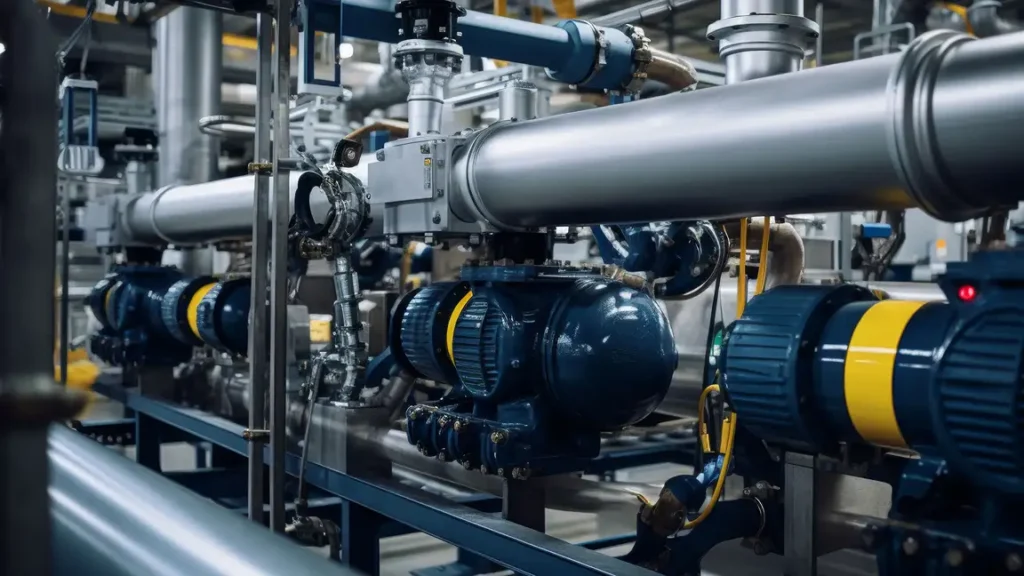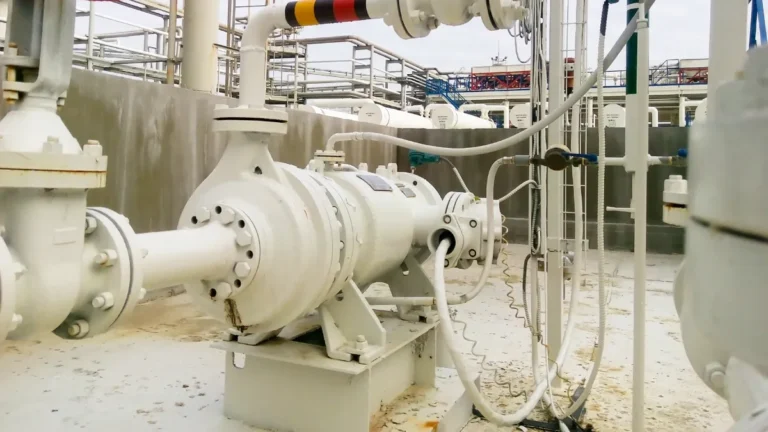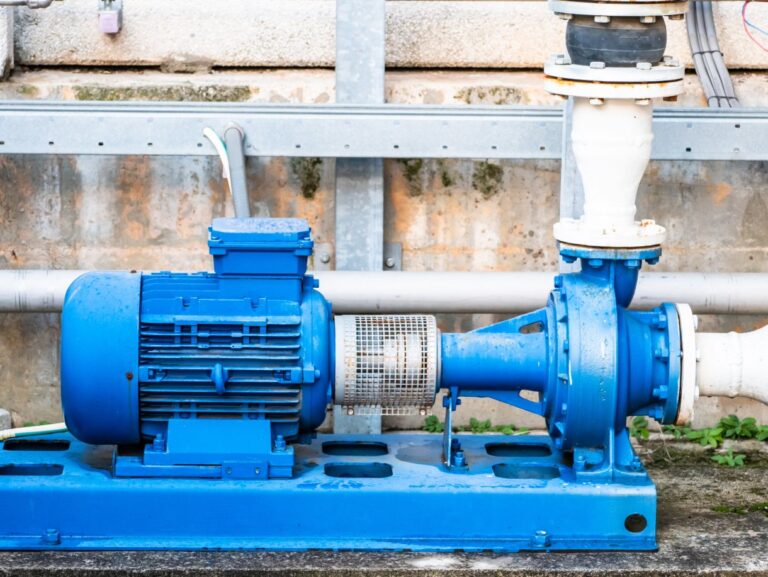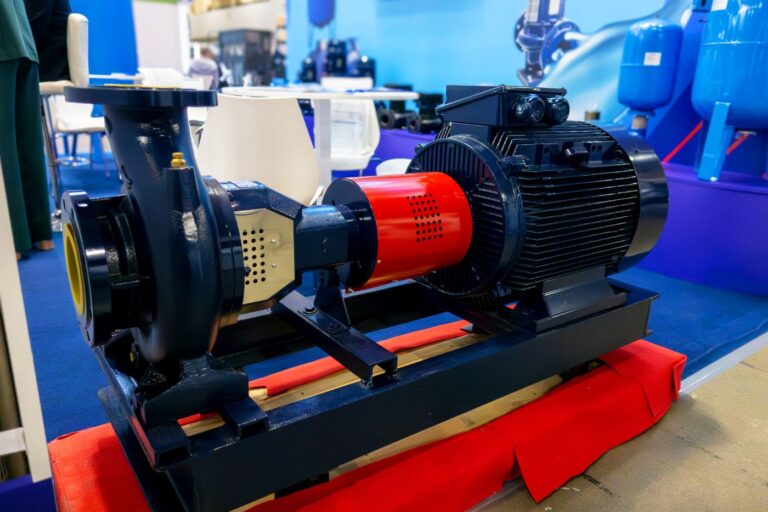In industries where moving thick, abrasive, and solid-laden fluids is a daily challenge, the submersible slurry pump stands out as a powerful and reliable solution. Engineered to operate while fully submerged, these pumps eliminate suction limitations and handle demanding slurry conditions with ease. Whether it’s a hydraulic submersible slurry pump for deep dredging or an electric submersible slurry pump for construction dewatering, understanding how they work and when to use them is essential for maximizing operational efficiency and minimizing downtime.
What Is a Submersible Slurry Pump?
A submersible slurry pump is a type of pump designed to operate while fully submerged in slurry—a mixture of water and solid particles such as sand, mud, silt, or industrial waste. Unlike standard pumps that are installed on the surface with suction lines extending into the slurry, submersible slurry pumps are directly immersed in the fluid, allowing them to handle high-solids content with minimal suction limitations efficiently.
Submersible slurry pumps are purpose-built for abrasive and viscous fluids, often containing large, coarse particles. They are commonly used in mining, dredging, construction, dewatering, and wastewater management where the fluid contains sediment or heavy sludge.
Comparison with Standard Submersible Water Pumps
While both submersible slurry pumps and standard submersible water pumps operate underwater, their design and performance capabilities differ significantly. A standard submersible water pump is built for clean or lightly contaminated water, typically focusing on flow efficiency and lightweight construction. In contrast, a submersible slurry pump is engineered with robust materials, high-chrome components, and wear-resistant features to withstand continuous exposure to abrasive and corrosive mixtures. These slurry pumps also accommodate higher solid content and larger particle sizes than typical water pumps.
Core Components of a Submersible Slurry Pump
- Impeller: The heart of the pump, responsible for transferring kinetic energy to the slurry. Slurry pump impellers are made from wear-resistant alloys and often feature open or semi-open designs to minimize clogging.
- Motor (Hydraulic or Electric): Power is provided either by a hydraulic submersible slurry pump system, which uses hydraulic fluid from a power pack, or an electric submersible slurry pump, which uses a sealed electric motor. The choice between hydraulic and electric models depends on site conditions and power availability.
- Sealing System: Designed to protect the motor from slurry ingress, the sealing system typically includes multiple mechanical seals and oil chambers. These are critical to ensuring long-term reliability, especially in abrasive and high-pressure environments.
- Pump Casing: The outer shell that houses the impeller and internal components. It is typically constructed from high-strength materials like ductile iron or hardened steel to resist wear from aggressive slurries.
How Submersible Slurry Pumps Work
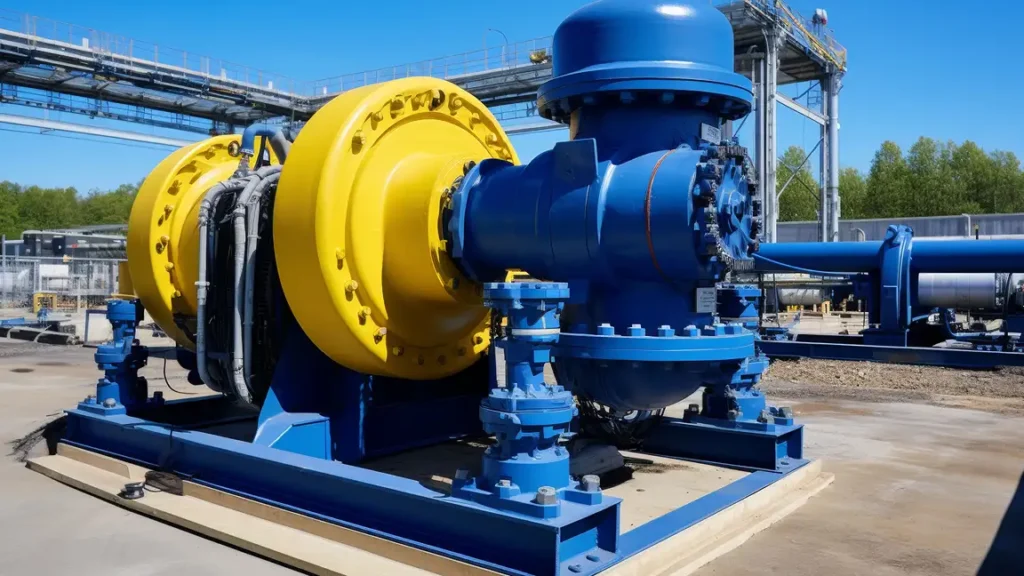
A submersible slurry pump operates on a straightforward yet highly effective principle: it is fully submerged in slurry. It uses a powerful motor to drive an impeller that moves the fluid. This design eliminates the need for lengthy suction lines and drastically reduces the risk of cavitation, making it ideal for high-solids and abrasive applications.
Operating Principle: Submerged Motor Driving the Impeller
At the core of the system is a submerged motor—either hydraulic or electric—encased in a sealed housing to prevent fluid ingress. In a hydraulic submersible slurry pump, hydraulic fluid is supplied from an external power pack, delivering high torque and reliability in demanding conditions. An electric submersible slurry pump relies on a fully enclosed electric motor that is often equipped with thermal sensors and cooling jackets for protection during continuous operation. The motor powers the impeller, which creates centrifugal force to draw slurry into the pump and push it through the discharge pipeline.
Suction and Discharge Process for Abrasive and Viscous Materials
The suction intake of a submersible slurry pump is positioned near the bottom of the unit, allowing it to access and process dense slurries directly. As the impeller spins, it generates a low-pressure zone that pulls the slurry into the pump casing. The fluid is then forced through the discharge outlet under high pressure. This process is optimized for handling abrasive and viscous materials, including sand, gravel, silt, sludge, and industrial waste with high solid concentrations.
Role of Agitation or Cutter Systems in Breaking Up Solids
To enhance performance in thick and settled slurries, many submersible slurry pumps are equipped with agitators or cutter systems. These components mechanically break up large particles, re-suspend settled solids, and prevent clogging at the pump inlet. Agitators are commonly found in electric submersible slurry pump models. In contrast, heavy-duty hydraulic submersible slurry pumps may feature integrated cutter heads for extreme slurry conditions such as dredging or oil sand extraction.
Maintaining Performance in Submerged, Low-Visibility Environments
Submersible slurry pumps are specifically designed to operate in underwater and low-visibility environments, such as slurry ponds, sediment basins, and dredge pits. Their sealed construction protects the motor and internal components from contaminants, while high-efficiency impellers and wear-resistant casings ensure long service life. Advanced models include flow sensors, seal fail detectors, and thermal overload protection to safeguard performance during prolonged submersion in challenging operating conditions.
Types of Submersible Slurry Pumps
Submersible slurry pumps are available in two primary configurations: hydraulic submersible slurry pumps and electric submersible slurry pumps. Each type is engineered for specific operational environments and offers distinct advantages depending on the job site requirements, power availability, and fluid characteristics.
Hydraulic Submersible Slurry Pump
A hydraulic submersible slurry pump is driven by hydraulic fluid supplied through high-pressure hoses from an external power pack. This design allows the pump to deliver exceptional torque and handle extremely heavy and abrasive slurries, even at significant depths or in submerged conditions where electric power is not practical or safe.
Key Benefits:
- High Torque Output: Ideal for thick slurries with high solid content.
- Deep Submergence Capability: Performs reliably in deep pits or dredging zones.
- Explosion-Safe Operation: Suitable for hazardous environments, including oil refineries or mines, where electric motors may pose a risk.
Common Applications:
- Dredging operations in rivers, lakes, and harbors.
- Mining activities that involve tailings, slurry ponds, and dewatering.
- Oil & gas applications involving drilling mud and cuttings removal.
Electric Submersible Slurry Pump
An electric submersible slurry pump features a sealed electric motor integrated into the pump housing. These pumps are plug-and-play units, often used in fixed installations or locations with consistent access to electrical power. They’re known for their ease of use, fast deployment, and minimal external equipment requirements.
Key Benefits:
- Simple Setup and Operation: Requires no hydraulic hoses or power packs.
- Low Maintenance Design: Fewer moving parts compared to hydraulic systems.
- Ideal for Remote Locations: Especially useful where rapid deployment is needed without complex infrastructure.
Common Applications:
- Wastewater treatment plants handle sludge and grit removal.
- Construction dewatering for sites with high groundwater or flooding.
- Industrial cleaning of pits, tanks, and basins containing abrasive residues.
Key Features to Consider
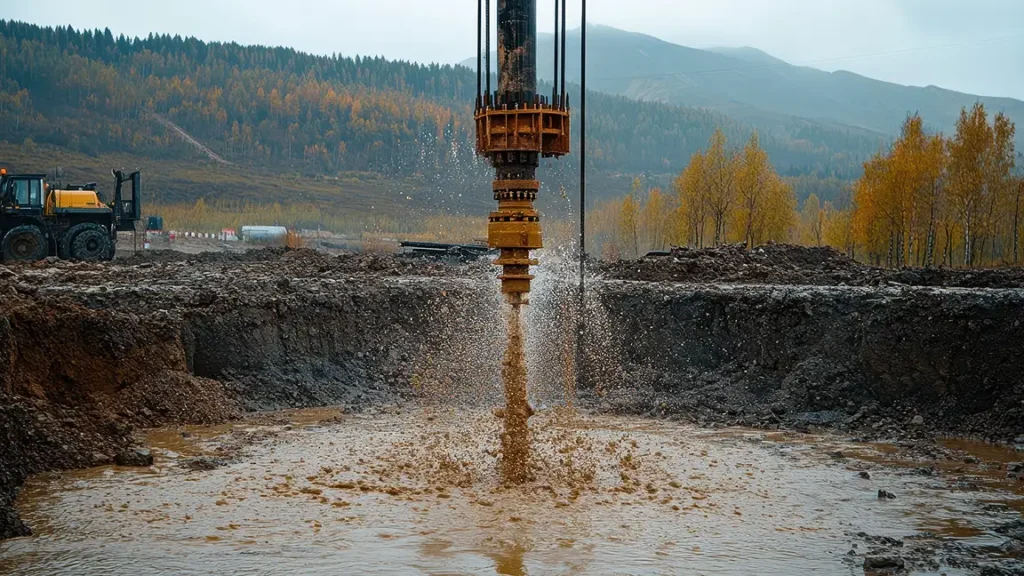
Choosing the right submersible slurry pump requires careful evaluation of key features that directly impact performance, durability, and operational efficiency. Whether you are selecting a hydraulic submersible slurry pump for dredging operations or an electric submersible slurry pump for construction site dewatering, the following factors are essential to ensure optimal performance in demanding slurry environments.
Material Construction
Submersible slurry pumps are exposed to highly abrasive and corrosive materials. To withstand this, the pump components—especially the impeller, volute, and wear plates—should be made from abrasion-resistant materials such as high chrome iron or hardened alloys. These materials significantly extend service life and reduce downtime caused by excessive wear.
Seal Protection
A reliable sealing system is critical in preventing slurry infiltration into the motor housing. Top-performing pumps incorporate mechanical seals, often in double mechanical seal configurations, to handle high-pressure and abrasive slurries. Some models also feature seal failure sensors to provide early warnings and protect against costly motor damage.
Solids Handling
One of the defining characteristics of a submersible slurry pump is its ability to process fluids with high solid content. Look for specifications that indicate the maximum particle size the pump can handle and the percentage of solids by weight it can process efficiently. This ensures compatibility with dense, viscous slurries typically found in mining, dredging, and industrial waste applications.
Motor Protection
Continuous operation in submerged environments demands robust motor safeguards. Both electric submersible slurry pumps and hydraulic submersible slurry pumps benefit from integrated overload protection, which prevents overheating and motor failure. Electric models may also include cooling jackets or thermal sensors that enable safe operation even in dry-run scenarios or fluctuating slurry levels.
Agitator/Cutter Options
For thick slurries or settled solids, agitators and cutter heads are invaluable. These components keep solids suspended, prevent clogging, and ensure consistent flow through the pump. Hydraulic submersible slurry pumps often feature heavy-duty cutter attachments, while electric submersible slurry pumps may include integrated agitators for slurry agitation at the suction intake.
Portability and Mounting
Depending on the application, the pump may need to be mobile or installed in a fixed position. Submersible slurry pumps can be mounted on skids, floatation platforms, or rail systems for flexible deployment. Portable systems are ideal for temporary projects or mobile dewatering units, while fixed mounts offer stability in long-term industrial applications.
When to Use a Submersible Slurry Pump
A submersible slurry pump is the preferred choice in operations where traditional surface-mounted or dry-installed pumps fall short. Its fully submersible design offers key advantages in environments where direct contact with the slurry is necessary to achieve efficient and uninterrupted pumping.
Conditions That Require a Fully Submerged Pump
Submersible slurry pumps excel in applications where the slurry source is located in unstable terrain, deep pits, or inaccessible areas that make the use of suction hoses impractical or impossible. When slurry settles at the bottom of deep sumps, storage tanks, underwater excavations, or confined lagoons, the pump must operate directly within the fluid to avoid priming issues or suction loss.
Ideal Scenarios for Submersible Slurry Pump Use
- High solids content: Traditional centrifugal pumps struggle with thick, abrasive materials. A submersible slurry pump is designed to handle dense slurries with high percentages of solids, including sand, silt, gravel, and sludge.
- Rapid material removal: In time-sensitive projects like emergency dewatering or dredging, these pumps can move large volumes of abrasive material efficiently without clogging.
- Suction limitations: Unlike surface pumps, submersible models eliminate suction lift constraints by being submerged at the source. This makes them ideal for deep or submerged pumping requirements.
Industries That Commonly Use Submersible Slurry Pumps
- Mining – For handling tailings, slurry transport, and pit dewatering.
- Dredging – To remove sediment from riverbeds, harbors, and ponds.
- Construction – In foundation dewatering, slurry wall support, and tunneling operations.
- Oil & Gas – For drilling mud handling and cleaning oil-contaminated sludge.
- Municipal Wastewater – To manage grit chambers, sludge pits, and biosolid transfer.
Both hydraulic submersible slurry pumps and electric submersible slurry pumps are tailored to meet the demands of these sectors, offering versatility and performance in challenging fluid-handling scenarios. Selecting the right model depends on power availability, site access, and the nature of the slurry to be moved.
Maintenance Best Practices
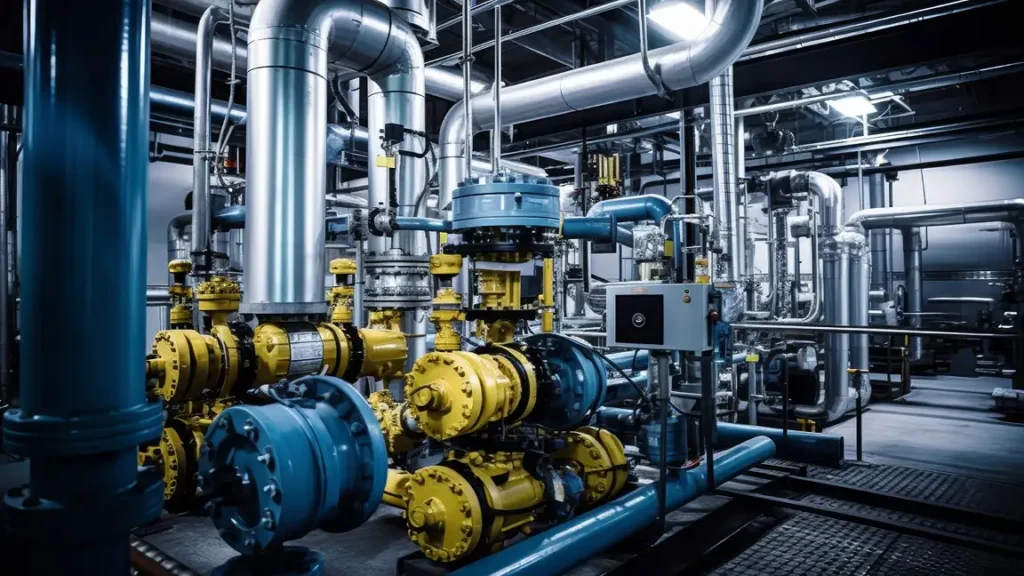
To ensure long-term reliability and optimal performance, every submersible slurry pump—whether electric or hydraulic—requires a proactive maintenance strategy. Given the harsh and abrasive environments in which these pumps operate, regular inspections and upkeep are essential to prevent unplanned downtime and extend equipment life.
Regular Inspection of Impellers and Wear Plates
The impeller and wear plates are the primary components exposed to high abrasion from solids-laden slurry. Periodic visual inspections for erosion, cracks, or deformation help identify early signs of wear. Replacing or resurfacing worn components ensures the submersible slurry pump continues to deliver consistent flow and pressure.
Monitoring Motor Temperature and Seal Condition
Both electric submersible slurry pumps and hydraulic submersible slurry pumps rely on well-sealed motors to prevent contamination and overheating. For electric models, it’s critical to monitor motor temperature using built-in thermal sensors and inspect seals for signs of leakage. Seal failure can quickly escalate into motor damage, so checking for water intrusion or oil cloudiness is key.
Lubrication Routines for Hydraulic Versions
Hydraulic submersible slurry pumps require consistent lubrication of internal hydraulic components to maintain efficiency and avoid overheating. Hydraulic fluid levels should be checked regularly, and filters should be replaced according to the manufacturer’s recommendations. Contaminated hydraulic fluid can compromise performance and lead to pump failure.
Cleaning After Use in Corrosive or Clog-Prone Environments
After operating in slurry containing chemicals, saltwater, or organic matter, flushing the pump with clean water is essential. This step helps prevent internal buildup, corrosion, and clogging. For both hydraulic and electric submersible slurry pumps, post-operation cleaning is especially important when used intermittently or in marine and wastewater applications.
Spare Parts Planning: Seals, Bearings, and Agitators
Stocking critical spare parts reduces downtime and supports fast recovery in the event of a failure. Common components to keep on hand include mechanical seals, shaft bearings, and agitator assemblies. For electric submersible slurry pumps, motor protection devices may also need periodic replacement, while hydraulic models benefit from having extra hose fittings and couplings available.
Common Mistakes to Avoid
Even the most rugged submersible slurry pump can fail prematurely if not used properly. Understanding and avoiding common operational errors can protect your equipment investment and ensure safe, efficient slurry handling. Whether you’re operating a hydraulic submersible slurry pump in a high-torque dredging application or deploying an electric submersible slurry pump for construction dewatering, these pitfalls should be carefully avoided.
Using a Submersible Slurry Pump in Unsuitable Fluid Conditions
Submersible slurry pumps are engineered specifically for abrasive and solids-laden fluids, not for clean water or chemically aggressive solutions. Operating the pump in low-viscosity fluids like pure water can lead to excessive wear or unstable operation. At the same time, exposure to harsh chemicals may damage seals, impellers, and the motor casing. Always verify that the pump is rated for the specific slurry or fluid type in use.
Ignoring Seal Failure Warnings or Running Dry
One of the most common causes of pump failure is running the unit with a compromised seal or without sufficient slurry to submerge the pump. Dry running leads to rapid overheating, especially in electric submersible slurry pumps, which rely on the surrounding fluid for cooling. Many pumps are equipped with seal failure indicators or thermal overload protection—ignoring these warnings can result in irreversible motor damage.
Choosing the Wrong Motor Type for the Job
Selecting between a hydraulic submersible slurry pump and an electric submersible slurry pump should be based on your site’s specific requirements. Hydraulic models are ideal for hazardous or remote locations with no access to grid power. At the same time, electric versions are better suited for plug-and-play setups or environments where ease of use and fast deployment are priorities. Choosing the wrong motor type can lead to inefficiencies, safety concerns, and project delays.
Improper Cable Handling and Submersion Depth Miscalculations
For electric models, power cables must be handled with care to prevent insulation damage, especially in abrasive environments. Avoid sharp bends, pinching, or excessive strain on the cable entry point. Additionally, incorrect estimation of submersion depth may lead to inadequate coverage of the motor, resulting in cooling failure or suction loss. Ensure the pump is placed at the correct depth with adequate slack and secure mounting to prevent shifting during operation.
Conclusion
Selecting the right submersible slurry pump requires a clear understanding of your application’s demands, including slurry characteristics, power availability, and site constraints. From rugged hydraulic submersible slurry pumps built for extreme environments to versatile electric submersible slurry pumps designed for fast deployment, each option brings unique benefits. By considering critical features, maintenance best practices, and common pitfalls to avoid, you can ensure long-term reliability, cost-efficiency, and superior performance in the most challenging fluid-handling operations.
